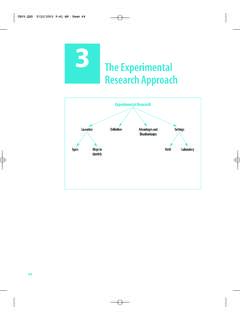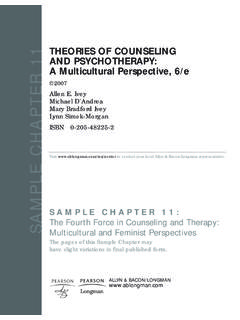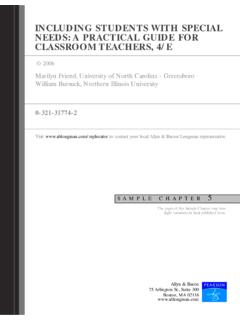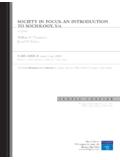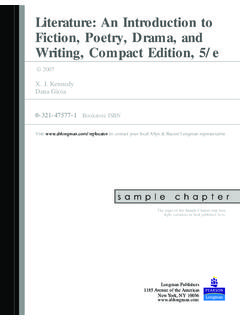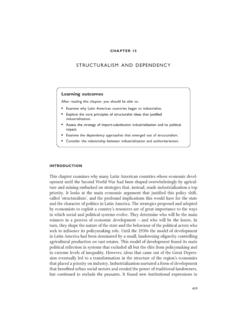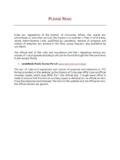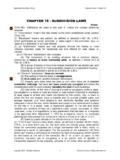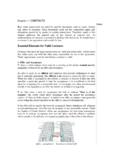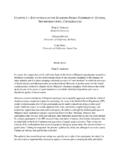Transcription of CONSULTATION, COLLABORATION, AND …
1 consultation , collaboration , chapter 2. and teamwork FOR STUDENTS. WITH SPECIAL NEEDS, 5/E. 2005. Peggy Dettmer Linda P. Thurston Norma J. Dyck ISBN-13: 9780205435234. ISBN-10: 0205435238. chapter 2. FOUNDATIONS AND FRAMEWORKS FOR. COLLABORATIVE SCHOOL consultation . ALLYN & BACON/LONGMAN. 6/24/2004 11:53 AM Page 35. chapter TWO. FOUNDATIONS AND. FRAMEWORKS FOR. COLLABORATIVE SCHOOL. consultation . Structures Interrelationships Learning Environments consultation , collaboration , and teamwork probably began around cave fires ages ago. As people learned about the ideas of others in the group and expressed their own opinions, they honed skills of communication and collaboration . As they planned hunting and food-gathering forays, and then began to plant and harvest, they developed strategies for teamwork . They most likely assessed their processes and outcomes to achieve greater success the next time.
2 Collaborative work groups have sustained and improved the quality of life from early ages to modern times with ever-escalating significance and consequence. Interpersonal skills now are becoming more and more essential for our survival and progress in an in- creasingly complex, interconnected world. All members of every society must interact ef- fectively and work together cooperatively if the world is to flourish. Educators who are successful in using these sophisticated skills will model for young people the processes they need to survive and prosper in the world they will inherit. The opening graphic for this chapter again accentuates the three organizational fea- tures of the book. The content (triangle) for chapter 2 features structures (triangle) in the context (square) of learning environments, and interrelationship processes (circle). FOCUSING QUESTIONS. 1. How do educational reform and school improvement issues signal the need for collaborative school consultation ?
3 2. What is the concept of the inclusionary school? 3. What is the significance of No Child Left Behind (NCLB) for collaborative school consultation ? 35. 6/24/2004 11:53 AM Page 36. 36 PART I CONTEXTS FOR WORKING TOGETHER IN SCHOOLS. 4. Are there theoretical and research bases for collaborative school consultation and what is its history? 5. What structural elements are key components in developing collaborative consultation methods to fit school contexts for serving student needs? 6. What models of consultation , collaboration , and teamwork have evolved in education? 7. How might educators tailor existing models and other structural elements into useful school consultation methods for their school contexts? KEY TERMS. American with Disabilities mainstreaming Resource/Consulting Teacher Act (ADA) method Program model (R/CT). approach mode School consultation collaborative school model Committee model consultation No Child Left Behind (NCLB) Stephens/systems model IDEA (Public Law 101-476) perspective system IDEA 1997 prototype triadic model inclusion/full inclusion Public Law 94-142 Vermont Consulting Teacher intersubjectivity regular education initiative Program model least restrictive environment (REI).
4 (LRE). VIGNETTE 2A. The setting is a school administration office where the superintendent, the principal, and the spe- cial education director are having an early-morning conference. Special Education Director: I've assigned five people on our special education staff to begin serving as consulting teachers in the schools we targeted at our last meeting. Principal: I understand the high school is to be one of those schools. I'm all for trying a new approach, but at this point I'm not sure my staff understands how this method of service is going to affect them. Superintendent: Are you saying we need to spend a little more time at the drawing board and get the kinks out of our plan before tossing it out to the teachers? Principal: Yes, and I think the parents also will want to know what will be happening. Special Education Director: I've been compiling a file of theoretical background, research studies, program descriptions, even some cartoons and witty sayings, that focus on consul- tation and collaboration approaches.
5 Let me get copies of the most promising material to you and the principals of the other targeted schools. Perhaps we should plan in-service sessions for teachers and awareness sessions for parents before we proceed. Superintendent: That sounds good. Draft an outline and we'll discuss it at next week's meet- ing. I'll get the word out to the other principals to be here. 6/24/2004 11:53 AM Page 37. chapter TWO FOUNDATIONS AND FRAMEWORKS FOR COLLABORATIVE SCHOOL consultation 37. SCHOOL IMPROVEMENT ISSUES. During the 1970s, 1980s, and 1990s educators witnessed an explosion of reports, proposals, and legislative mandates calling for educational reform. During the 1970s the issues focused on accountability, lengthening of school days and years, and increased investments of time, money, and effort in education. Demands for cost containment and growing concerns over labeling of students fueled interest in a merger of general education and special education.
6 The primary impetus for the merger was the mainstreaming movement with the concept of least restrictive environment (LRE) catalyzed by passage of Public Law 94-142 (that is, put forth by the 94th Congress as their 142nd piece of legislation). After that legislation was passed, educators could no longer arbitrarily place individuals with disabilities in a special school or self-contained classroom. A continuum of service options was to be available and the type of service or placement was to be as close to the normal environment as possible, with general education teachers responsible for the success of those students. In order to meet this new responsibility, teachers were to receive help from special education personnel. During the second wave of reform in the 1980s the individual school became the unit of decision making. This promoted the development of collegial, participatory environments among students and staff, with particular emphasis on personalizing school environments and designing curriculum for deeper understanding (Michaels, 1988).
7 One component of this second wave was school restructuring. Many states initiated some form of school re- structuring; however, few schools truly were restructured. Where restructuring efforts oc- curred, they tended to be idiosyncratic in that they were carried out by a small group of teachers, creating only marginal changes (Timar, 1989). A position paper issued by Will (1986), former director of the Office of Special Education and Rehabilitative Services, stated that too many children were being inappro- priately identified and placed in learning disabilities programs. In that paper Will called for collaboration between special education personnel and general education personnel in pro- viding services within the general classroom. Thus the Regular Education Initiative (REI), referred to by some educators as the General Education Initiative (GEI), precipitated major changes in the way education is delivered.
8 All students, with the exception of those with se- vere disabilities, were from that time to be served primarily in a regular education setting. The rationale for the REI was that: The changes would serve many students not currently eligible for special education services. The stigma of placement in special education programs separate from age peers would be eliminated. Early intervention and prevention would be provided before more serious learning de- ficiencies occur. Cooperative school-parent relationships would be enhanced (Will, 1986). In 1986 94-142 was amended by 99-457, which mandated free appropriate education for preschool children from ages 3 5 with disabilities. An Individualized Family Service Plan (IFSP) was required for each child served, thus extending the concept of the IEP to provide support for child and family (Smith, 1998). 6/24/2004 11:53 AM Page 38. 38 PART I CONTEXTS FOR WORKING TOGETHER IN SCHOOLS.
9 In 1990, early in the third wave of reform, Public Law 94-142 was amended by pas- sage of Public Law 101-476, the Individuals with Disabilities Education Act (IDEA). That legislation's primary elements were: All references to handicapped children were changed to children with disabilities. New categories of autism and traumatic brain injury (TBI) were added, to be served with increased collaboration among all special education teachers, classroom teach- ers, and related services personnel. More emphasis was placed on requirements to provide transition services for students 16 years of age and older. Two distinct groups emerged to advocate for REI the high incidence group speak- ing for learning disabilities, behavioral disorders, and mild/moderate mental retardation, and the low-incidence group speaking for students with severe intellectual disabilities. A few in the latter group even spoke out for the elimination of special education altogether (Fuchs and Fuchs, 1994).
10 Both groups shared three goals: To merge special and general education into one inclusive system To increase dramatically the number of children with disabilities in mainstream classrooms To strengthen the academic achievement of students with mild and moderate disabil- ities, as well as that of underachievers without disabilities. To achieve these goals, total restructuring of schools would be needed. Increasingly, special education reform is symbolized by the term inclusive schools' (Fuchs & Fuchs, 1994, p. 299). The America 2000 report presented in 1991 by President George H. W. Bush and Sec- retary of Education Lamar Alexander, and the 1994 federal school reform package known as Goals 2000 signed into law by President Clinton, identified goals to be met in the nation's schools by the year 2000. The latter report stipulated that home and school partnerships are essential for student success.
